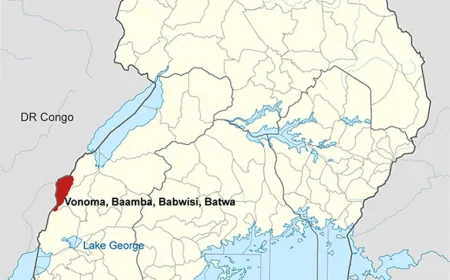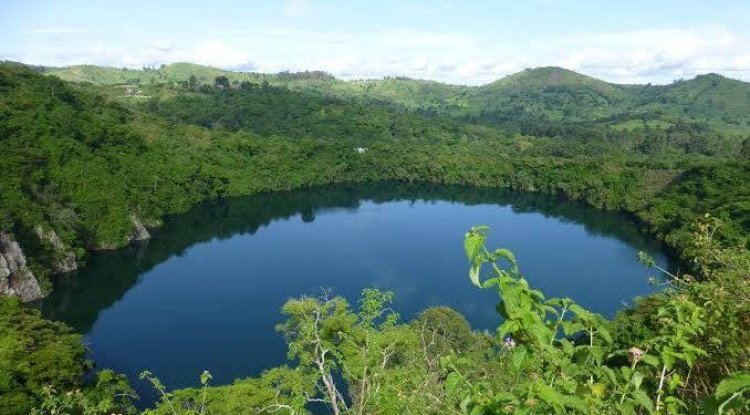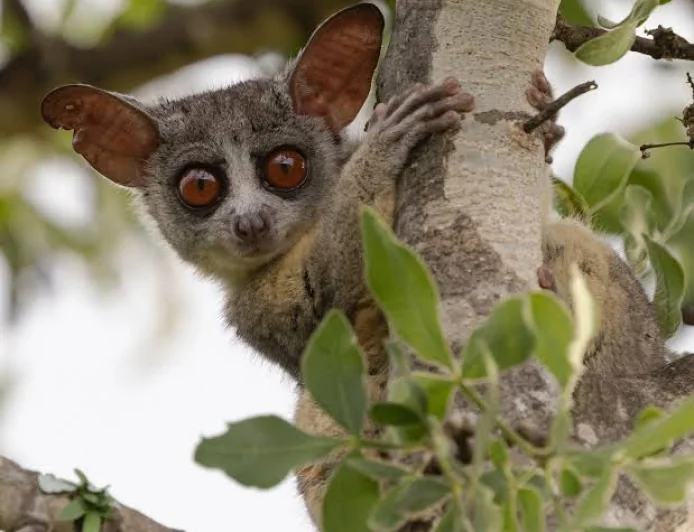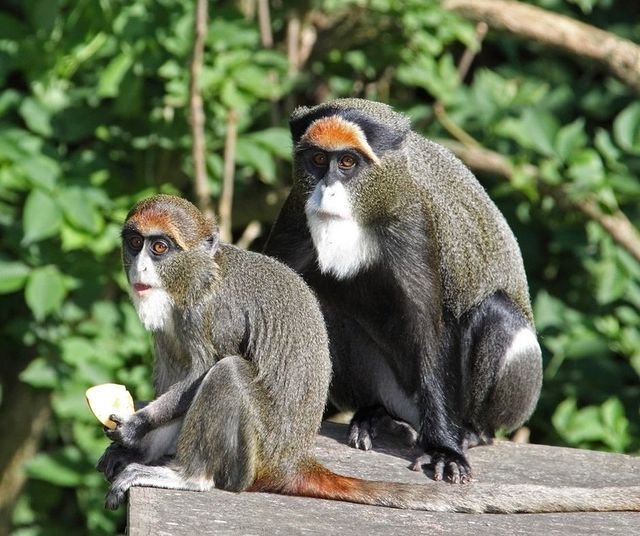Greater kudu
The Greater Kudu, one of the largest bushbuck antelopes, is remarkably attractive with a grey-brown coat accented by delicate white side stripes. In the far southwest of Uganda, in Kidepo Valley National Park, you can find this magnificent ungulate.

Eastern and southern Africa are home to the larger kudu, a forest antelope (Tragelaphus strepsiceros). Despite covering such a large region, they are rarely inhabited in most of their range because of habitat loss, deforestation, and poaching. One of the two species that are frequently referred to as kudu is the greater kudu, Tragelaphus imberbis.
Greater kudus can range in colour from brown/bluish grey to reddish brown, and they have long, slender legs. Along their torso, they have four to twelve vertical white stripes. A small white chevron can be seen between the eyes, and the head is often darker in colour than the rest of the body. Larger kudu bulls typically outweigh the cows in size and vocalise more frequently, including low grunts, clucks, humming, and gasping. The bulls have huge horns with two and a half twists that, if straightened, would reach an average length of 120 cm (47 in). They also have beards that go along their throats.
As they slant back from the skull, they start to diverge slightly. The bull doesn't start growing horns until it is between 6 and 12 months old. At roughly two years old, the horns begin their first spiral spin. They do not complete all two and a half rotations until they are six years old, and on rare occasions, they may even complete three full turns. One of the largest antelope species is this one.
Greater Kudu Behaviour
Greater kudus can live up to 23 years in captivity and 7 to 8 years in the wild. They might be active every hour of the day. During the rainy season, when food is abundant, herds scatter. Because there are so few concentrated locations of food during the dry season, the herds will gather there. The greater kudu have home zones rather than being territorial. Home ranges for maternal herds are roughly 4 square kilometres, and they occasionally cross paths with those of other maternal herds.
Although the male kudus don't often engage in physical combat with one another, it does occasionally happen, especially if the two are of similar size and stature. This sparring behaviour is displayed by the male kudus by locking their horns and pushing one another. The lateral display is not displayed by one male before dominance is established. Rarely, during a fight, both males may become stuck in the other's horns and be unable to extricate themselves, which may lead to the death of both animals.
Reproduction of Greater Kudu
Greater kudus mature sexually between the ages of 1 and 3. The rainy season, which can vary a little depending on the locale and environment, ends with the mating season. Prior to mating, there is a ritualised courtship process in which the male stands in front of the female and frequently engages in a neck struggle. The man then follows the female while calling to her in a low voice until she agrees to have sex with him. There are about 240 days of gestation (or eight months). Calving typically begins in late austral summer, between February and March, when the grass is typically at its highest.
Although rarely there may be two calves, greater kudus typically give birth to one. The kudu's pregnant female will depart from her group to give birth, and once the baby is born, it spends around 4 to 5 weeks disguised in foliage (to avoid predation). The young child will spend brief periods of time with its mother after 4 or 5 weeks; by the time it is 3 to 4 months old, it will always be with her. It is quite independent of its mother by the time it is six months old. The wet season is when most births take place (January to March).
Where to see Greater Kudu in Uganda
Using the newly paved Gulu route, it will take roughly 10 hours to travel to Kidepo. The junction for Murchison Falls National Park, Budongo (chimpanzee) Forest, and Ziwa Rhino Sanctuary are all on the way. So you may add Budingo, Ziwa, and Murchison to your list of places to visit on your northern Uganda safari.
An alternative is to take a scheduled small aircraft flight from Entebbe International Airport to Pakuba Airstrip.
Anybody can be drawn to the park by the greater kudu. Predators like the leopard, lion, cheetah, bat-eared fox, and black-backed and side-striped jackals are abundant in the Kidepo Valley National Park. Other twelve antelope species, such as Jackson's hartebeest, Uganda kob, Oribi, eland, klipspringer, and, of course, the greater kudu, can be found with the vast herds of buffalo.
What's Your Reaction?
 Like
0
Like
0
 Dislike
0
Dislike
0
 Love
1
Love
1
 Funny
0
Funny
0
 Angry
0
Angry
0
 Sad
0
Sad
0
 Wow
0
Wow
0













































































